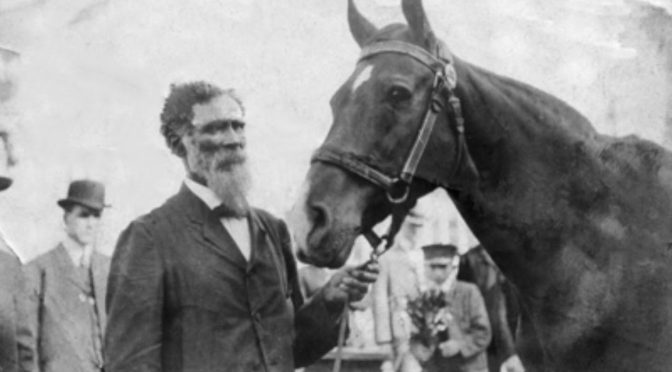Dr. William "Bill" Key, was born a slave in Murfreesboro, TN in 1833. While enslaved, Key became a successful veterinarian who decades after the Civil War trained the famous "Beautiful Jim Key", known as the smartest horse in the world.
Bill was owned by Captain John Key. When Bill was five years old, the Captain's died and willed Bill to his cousin, John W. Key of Shelbyville, Tennessee. Bill demonstrated a special way with animals as early as six years of age. He also was a great help to the John W. Key family when it was observed that the disabled father of John W. Key was much calmer when Bill was around.
However, the place where Bill really shined was around horses, he demonstrated a remarkable talent for working with horses and mules. He was so effective with horses that he was soon being sent to the pasture alone to train the horses. Additionally, he was given special attention because of his work keeping his master's father company. John Key taught Bill reading, writing, mathematics, and science. As a child he Bill read veterinary texts and experimented with animal remedies until he became a successful veterinarian and horse dentist. Known as Dr. Key, he also practiced dentistry and other healing arts for slaves.
Martha, John's wife, really appreciated the effect Bill had on John's father as it saved her from having to deal with the recalcitrant old man. She taught Bill such gentlemanly skills like presentation, elocution, and etiquette. These skills would all come to be most valuable to him later when he became an adult and found himself in need of them to succeed as a free man after the Civil War.
Civil War
With the outbreak of the Civil War, Dr. Key accompanied his master's two sons to Fort Donelson. There he constructed his own shelter, a log-covered dugout known as Fort Bill, in which he took refuge and offered protection to his masters during Union bombardment. When Fort Donelson surrendered, Key helped his masters escape to Confederate forces commanded by Nathan Bedford Forrest. After the battle of Stones River, the Sixth Indiana regiment captured Key as he tried to smuggle another black man through Union lines. He was sentenced to hang, but the execution was postponed when it was learned that he was a good cook and poker player. Playing poker with Union officers, Key purchased his release in exchange for their gambling debts. Captured and sentenced to hang on another occasion, Key purchased a delay of execution with one thousand dollars he had sewn between the soles of his shoe. Confederate raiders liberated him the next day.
The relationship between the John W. Key family and Bill continued to grow stronger and after the Civil War when the Key family lost everything, Bill, who by then had accumulated quite a sum of money, stepped in and helped send John W. Key’s two sons to Harvard.
After the war, Dr. Key and his former masters found the family estate in ruins. The elder Key had died, leaving the family lands heavily mortgaged. Key developed and marketed Keystone Liniment for various animal and human ailments. With proceeds from gambling winnings and Keystone Liniment sales, he quickly paid off the mortgage for his former masters and subsequently underwrote their education. When asked about his unusual generosity toward his master's family over the years, he is said to have responded, "I was one of those fortunate men who had a kind master."
William Key's Wives
Though he was eventually married to four notably beautiful, educated women, Dr. Key had no children of his own.
Dr. Key was first married to Lucy Davidson, the daughter of Arabella Davidson. Lucy was born in February of 1832 and died on August 17, 1885. She is buried in Willow Mount Cemetery in Shelbyville.
![]() Lucy Davidson Key – 1832–1885
Lucy Davidson Key – 1832–1885
Dr. Key took for his second wife, the sister of Lucy Davidson. She was Hattie Davidson, but Hattie did not live very long, she died about 1886.
Dr. Key took for his third wife, Lucinda Davis, the daughter of George and Harriett E. Davis. Lucinda was born on February 24, 1859, and died August 21, 1896, with her burial in Willow Mount Cemetery. Lucinda Davis Key, MD, received her medical degree at Howard University, one of the first black women doctors licensed to practice in the state of Tennessee.
![]() Lucinda Davis Key – 1859–1896
Lucinda Davis Key – 1859–1896
Dr. Key took for his fourth and last wife, Maggie Davis, a sister of Lucinda Davis. Maggie was born in 1865 and died in 1935 with her burial in Willow Mount Cemetery.
![]() Maggie Davis Key – 1865–1935
Maggie Davis Key – 1865–1935
Business
Dr. Key established a leading veterinary practice and horse hospital in downtown Shelbyville on a lot he purchased on North Main Street. While he had no formal training, his reputation of being able to do wonders for horses caused him to be considered a veterinarian by the townspeople. He also opened a racetrack, a restaurant, a hotel, a wagon shop and operated a successful pharmaceutical business. The liniment business became so profitable, he promoted it across the South. He organized a traveling minstrel and medicine show, at which his animals performed skits to demonstrate the apparent effectiveness of his medications.

Within five years, “Dr.” Key was one of the most prosperous men in Shelbyville. This gave him the resources to turn his attention to the sport of kings, horse racing, and his goal was to breed the world’s fastest racehorse.
Beautiful Jim Key
While in Tupelo, Mississippi, Key bought a badly abused Arabian bay, Lauretta, from a defunct circus. He nursed the mare back to health and bred her to Tennessee Volunteer, a Standardbred stallion. She produced a colt so sickly that Dr. Key considered having it destroyed. Instead, he named it Jim, after the town drunk, who had a similarly wobbly gait. After treating Jim with his own medicines, Dr. Key nursed Jim to good health, he watched as the misfit colt eventually transformed into a gorgeous mahogany bay.
In narrating Jim's unique education, Dr. Key notes that he was already fifty-six years old when the sickly Jim was foaled. When Jim's mother died, the orphaned colt refused to be separated from his owner and trainer, causing such a ruckus in the barn that Dr. Key was forced to take the colt into his home. For the first year of his life, Jim lived as a human, absorbing language and abstract concepts to a staggering degree. When he outgrew the house and moved back to the stables, Dr. Key noticed that the animal let itself out of gates, opened drawers to retrieve apples, and responded with affirmative and negative nods to questions. Dr. Key set up a cot out for himself in the stable to sleep with Jim. The two were inseparable companions and partners from then on.
Key put Jim on a rigorous training routine that lasted for seven years. When finally exhibited, Beautiful Jim Key could read, write on a blackboard, spell, do math, distinguish among coins and make change, identify playing cards, play a hand-organ, tell time, sort mail, cite biblical passages and respond to political inquiries, among other amazing feats.
Although Beautiful Jim Key was clearly gifted his opportunities were limited by Dr. Key’s race. No matter how eloquent he was, or how talented, because Dr. Key was a black man in the 1800s he was only allowed to participate in selected competitions.
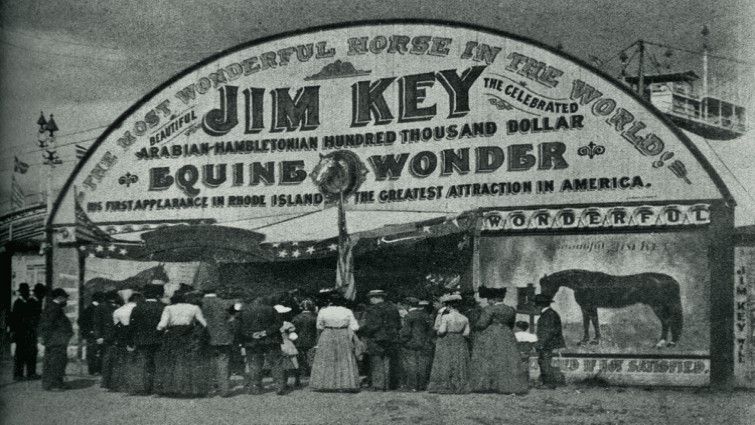
In 1897, Dr. Key was asked to serve on the “Negro Committee” at the Tennessee Centennial Exposition in Nashville. "Beautiful Jim Key" made his stage debut in front of none other than President William McKinley. President McKinley offered high praise for both the horse and the training methods. Dr. Key often emphasized that he used only patience and kindness in teaching the horse, and never a whip.
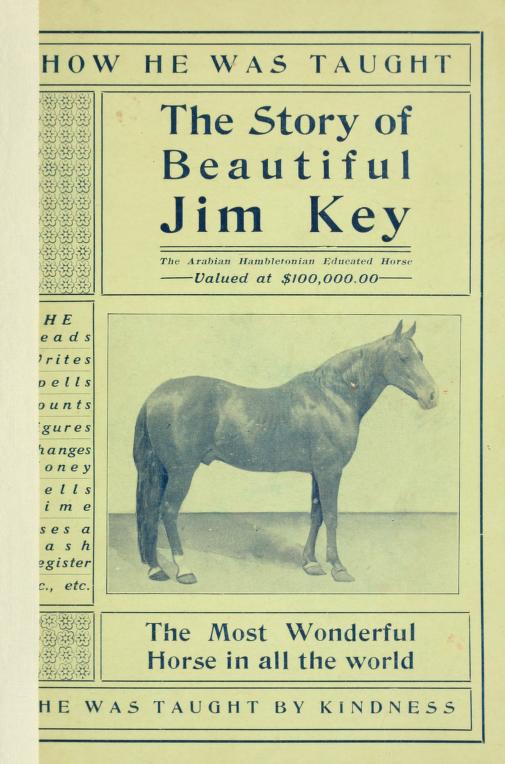
Albert R. Rogers, a wealthy officer of the American Humane Association, witnessed the performance and was especially gratified that Key's training methods consisted entirely of positive rewards for performance. Rogers negotiated the right to exhibit the horse nationally, advanced Key a large sum of money, and promised that Jim would not be separated from Key as long as either lived. Key, Beautiful Jim, and grooms Sam and Stanley Davis of Shelbyville, traveled to the Rogers estate in New Jersey where, for several months, Key prepared Beautiful Jim for his New York City debut. In August 1897 Beautiful Jim amazed viewers and the New York City press and quickly became a celebrity.
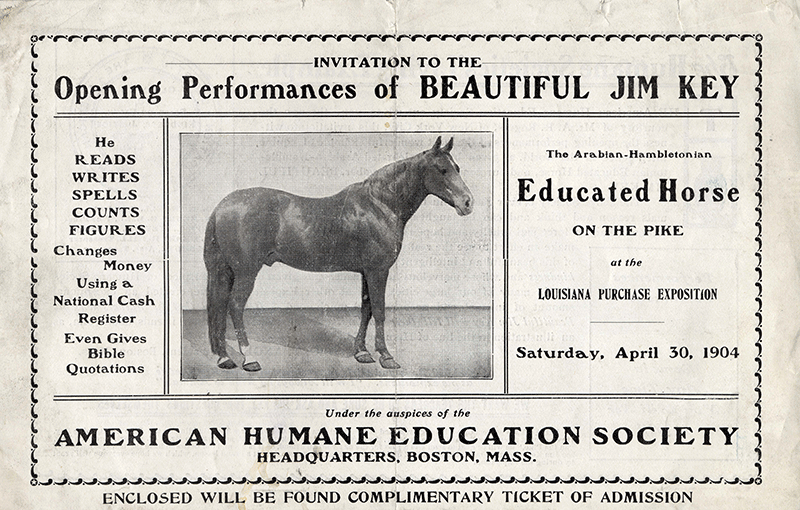
This horse became one of the most famous celebrities, animal or human, in the late 1890s and early 1900s. Dr. Key and Beautiful Jim Key became the toast of two World's Fairs and even had their own pavilion at the St. Louis fair in 1904.
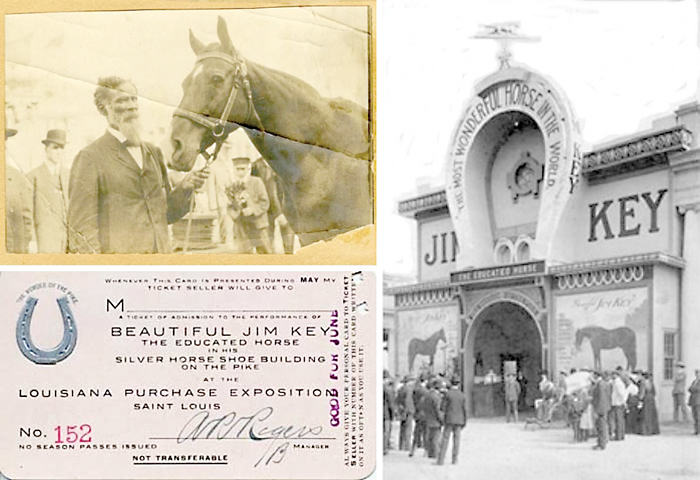
The Beautiful Jim Key exhibit was one of the first shows to open at the beginning of the St. Louis World's Fair and was a popular top moneymaker. William Key performed in front of then-President Teddy Roosevelt's daughter, Alice. Jim Key spelled Alice's name- “Alice Roosevelt Longworth,” adding the surname of her escort.
The Beautiful Jim Key exhibit building was called the Golden Horseshoe Building and cost $12,000; Carson-Hudson & Co were the architects. The price of Admission to see the Beautiful Jim Key exhibit was 15 cents for adults and 10 cents for children. The exhibit made a profit of $51,654.28 dollars; the equivalent of nearly $1.5 million in 2020 dollars.
Jim became the number one box office star in the nation and energized the worldwide animal welfare movement, making the phrase "be kind to animals" a household ideal.
Known as the "Marvel of the Twentieth Century" and "The Greatest Crowd Drawer in America," the two were seen by an estimated ten million Americans and written about in every major newspaper. Fans collected his promotional pamphlets, souvenir buttons, postcards, and photos, bought Beautiful Jim Key pennies, danced the "Beautiful Jim Key" two-step, wore Jim Key gold pinbacks in their collars, and competed in Beautiful Jim Key essay contests, while millions signed up to join and support humane groups around the country. Two million children joined the Jim Key Band of Mercy and signed his pledge, "I promise always to be kind to animals."
When Dr. Key traveled along with Beautiful Jim, the horse traveled in private train cars, drank purified water and ate hay that was fit for a star of his caliber. He also had quite an entourage. He traveled with Dr. Key, two grooms, a veterinarian and Monk, a former stray dog that served as the horse’s companion and bodyguard. Monk, the dog liked to stand on the horse’s back.
For nine years, Key, Rogers, and Beautiful Jim toured major cities east of the Rocky Mountains and performed at large venues from Atlantic City to Chicago.
Universally praised for Service to Humanity, Beautiful Jim Key and Dr. William Key retired after their record-breaking 1906 season when Jim's rheumatism caused the two to return to Shelbyville with the plan to resume after a year's rest. Three years later, Bill passed away at age 76, causing a stir even in death by the large numbers of mourners – black and white – who attended his memorial.
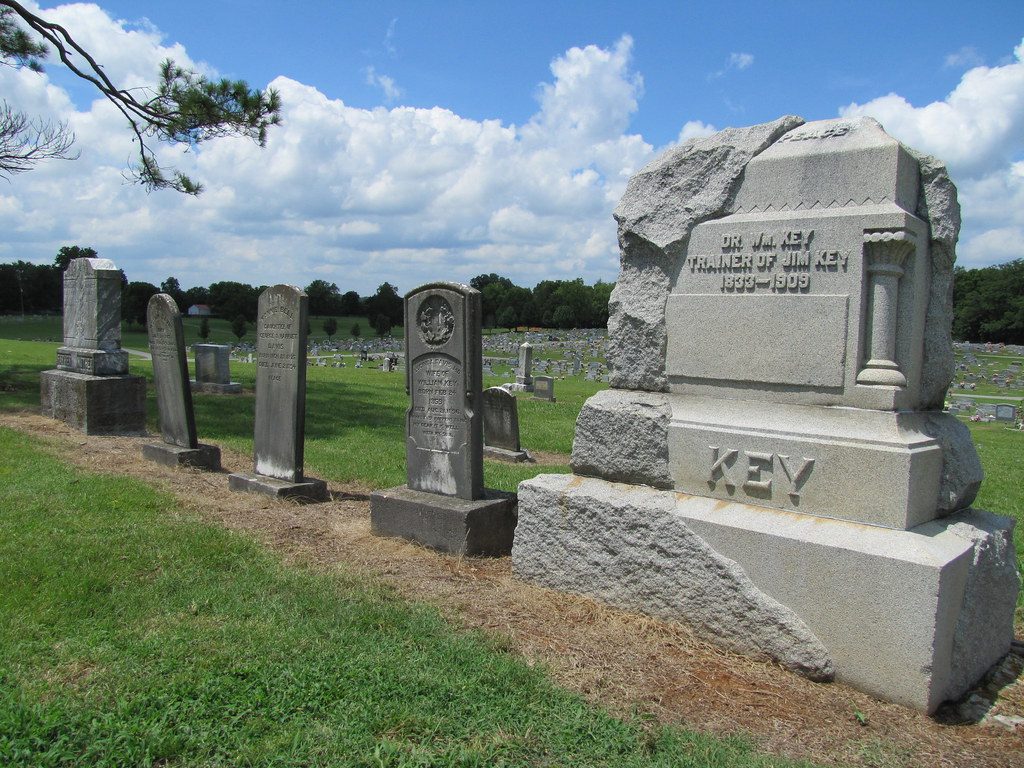
In 1912, Beautiful Jim Key died on a cool autumn day, "passing out with all ease," as Dr. Key's brother-in-law, Dr. Stanley Davis, wrote to Albert Rogers.
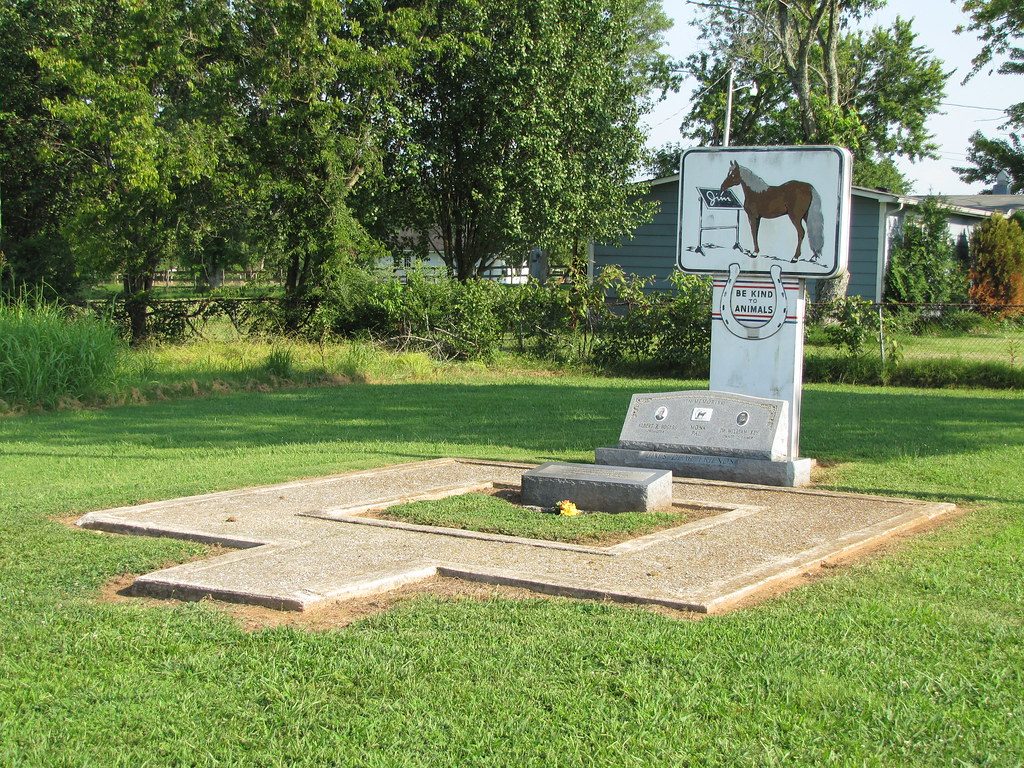
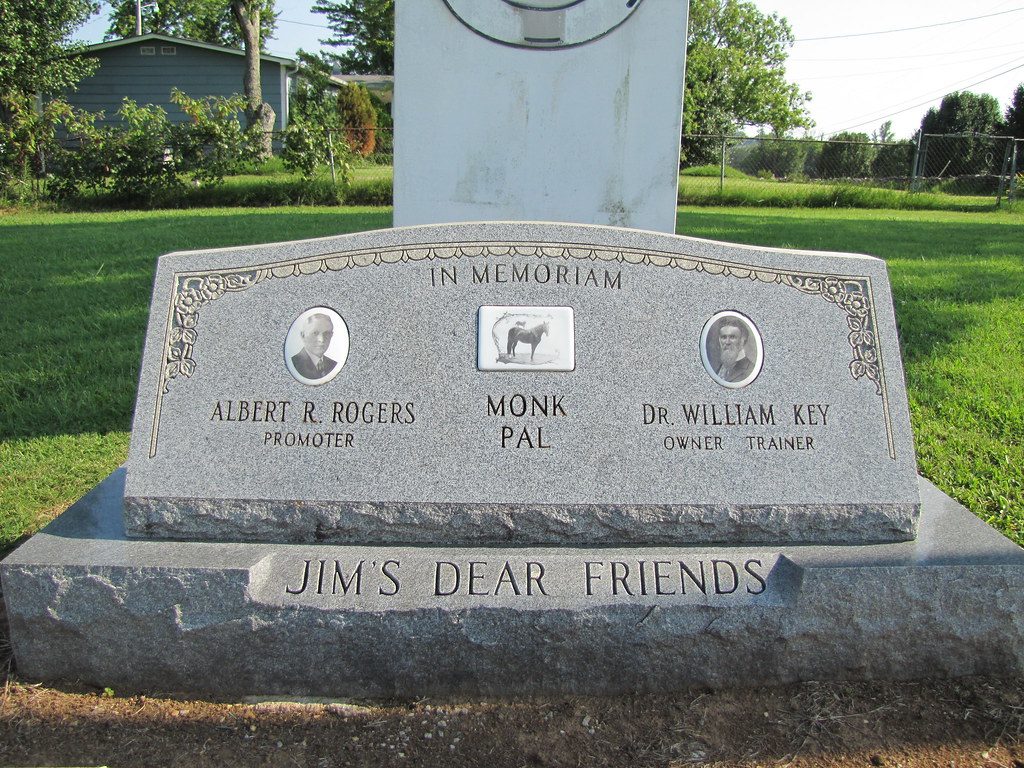
For a century, this astonishing, true story of an American hero who rose to international fame a century ago, spurring a significant shift in human consciousness, has been buried in history.
Citations:
Tennessee Encyclopedia – https://tennesseeencyclopedia.net/entries/william-key/
BlackThen – https://blackthen.com/dr-william-bill-key-slave-renowned-veterinarian/
FindGrave – https://www.findagrave.com/memorial/41646960/william-key
Horse Spirit – https://horsespirit.site/2020/01/28/behind-the-incredible-story-of-jim-key-the-worlds-smartest-horse/

